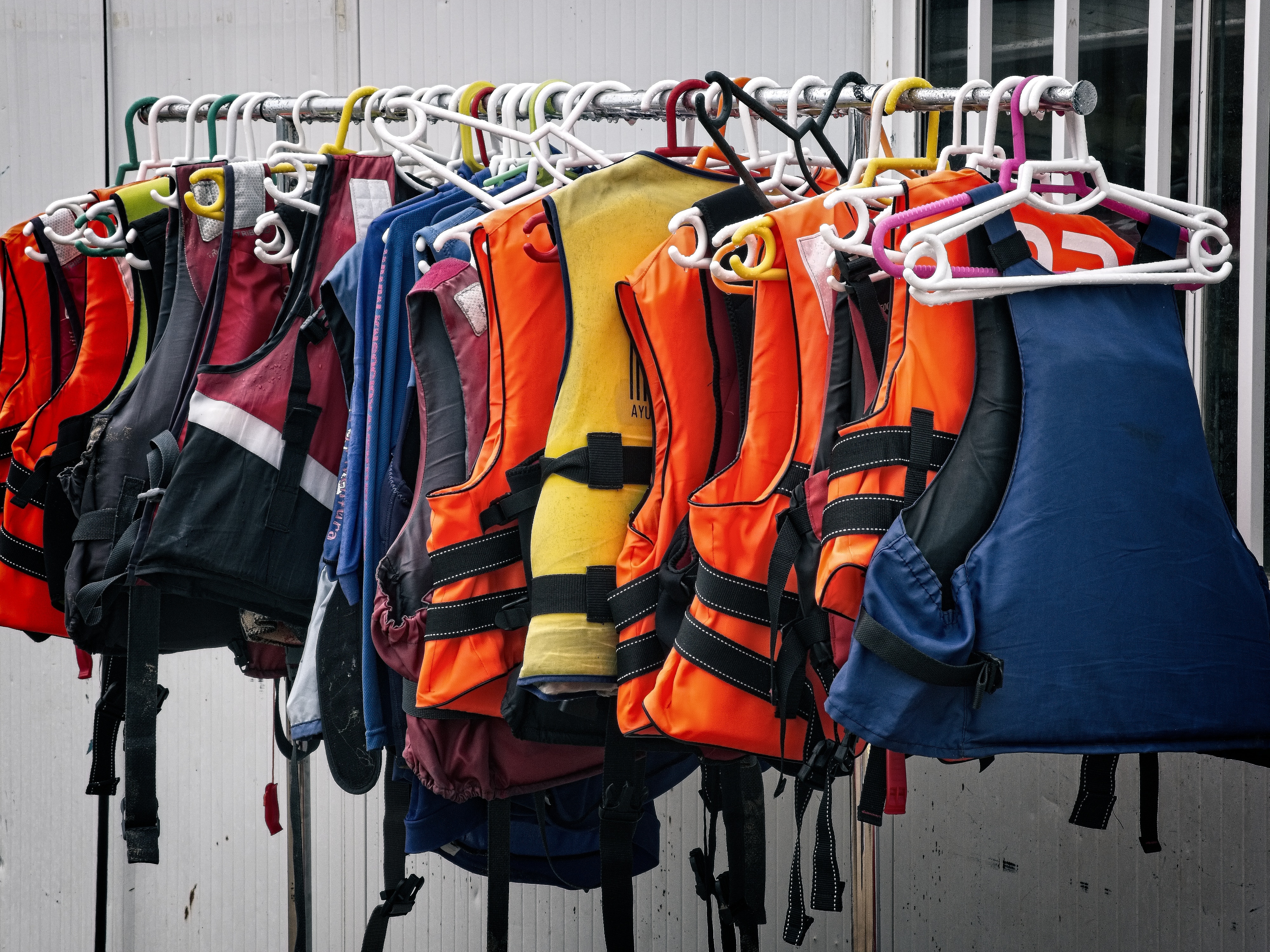ENROLL IN A BOATING SAFETY COURSE
A boating safety course is filled with worthwhile advice to help boaters safely navigate. Courses are offered in various locations and for all types of recreational boating.
Enroll in a class with a qualified organization, sponsored by either the US Coast Guard, the US Power Squadron, or offered through your state’s boating authority.
---------------
FOLLOW BASIC BOATING RULES
Follow all the rules and regulations from your boating safety course. Practical safety considerations relating to your boat are essential for every trip on the water, especially because not every boater is aware of them or follows them. Obey marine traffic laws, distress signals, and other boating signals.
For more on the unwritten rules of the water, click here.
---------------
BUY USCG-APPROVED FLOTATION DEVICES
Personal Flotation Devices (PFDs) are vital (and mandatory) components to ensure safety on the water for all passengers. A flotation device can quite literally save a life, making this safety precaution a necessity on your craft. The USCG has done extensive research and testing on different types of PFD’s to find options that offer exceptional performance. Make sure your PFD’s are USCG-approved and have one for every person on your boat. Here are some options.
In addition to PFDs, you should have all other required equipment on board as well. This includes navigation lights, fire extinguishers, flashlight, horn, flares, and a first-aid kit.
---------------
WEAR YOUR LIFE JACKET
Step one is to make sure you have lifejackets for every person that might be aboard, but step two is to put them to use. There is no reason not to wear a lifejacket while on a boat. Modern lifejackets are extremely thin, flexible, and comfortable, making them extremely easy to wear and move around in.
For more information on lifejackets, click here.
---------------
BUY A USCG APPROVED FIRE EXTINGUISHER(S)
All boats are required to have at least one fire extinguisher and it should be inspected at least once a year. Make sure you have a U.S. Coast Guard approved, marine-type fire extinguisher on board and it is in proper working condition.
Look below to see the requirements for your specific craft.
- Boats with a length less than 26' must have one B-I fire extinguisher.
- 26'-40' boats must have two B-I extinguishers or one B-II extinguisher.
- 40'-65' boats must have three B-I extinguishers or one B-II and one B-I extinguisher.
---------------
PRACTICE SAFE ACTIVITIES ABOARD THE CRAFT
Only conduct safe activities aboard your boat. This includes wakeboarding, water skiing, fishing, tubing, and cruising. These activities are only considered safe if the driver has the knowledge and expertise to oversee it properly and safely. Always have a spotter in addition to the driver.
---------------
CHECK THE WEATHER
Marine forecasts help to inform boaters of potentially adverse weather and wave conditions. The forecast will tell you wind speed and direction, wave heights and period, and shore roughness. Most VHF radios have a weather station that continuously broadcasts conditions and advice.
Before heading out on the water, you should always consult the latest marine forecast at http://www.nws.noaa.gov/om/marine/home.htm or on NOAA Weather Radio.
---------------
BE PREPARED FOR HURRICANES
If your boat is located in a hurricane-prone area, it is essential to prepare for these kinds of natural disasters. This preparation will help protect your boat if a hurricane does occur. Here are some key tips to help you prepare - evaluate the risks based on your location, have a storage plan and supplies checklist, and protect yourself with windstorm insurance coverage.
Read through our Hurricane Preparedness Guide and make sure your watercraft is prepared for hurricane season.
---------------
HAVE A BAD WEATHER PLAN
Bad weather conditions can cause extremely perilous circumstances on the water, including monstrous winds and waves, lightning, waterspouts, and heavy rain. Storms can form quickly and out of nowhere, making it crucial to develop a clear plan.
Depending on the storm’s severity you’ll either want to go to a safe harbor, haul your boat out and take it to a safe location if possible, or simply wait out the storm. Do some research as to what conditions your specific craft can handle. Look at the storm’s rating on the Beaufort scale and where safe harbors along your route are located.
---------------
FOLLOW PROPER MAINTENANCE TIPS
Taking the time to keep your boat in good condition will preserve the long-term value of your watercraft. A well-maintained boat is more likely to withstand damage from an accident.
---------------
LOAD YOUR BOAT CORRECTLY
Pay attention to the distribution of weight when loading your boat with material, equipment, and passengers. Administering the load evenly throughout the craft will ensure safety. In addition, always have the maximum persons capacity of your specific boat on the top of your mind. Exceeding this limitation, even by one additional person, is extremely dangerous.
---------------
KEEP AN EMERGENCY POSITION INDICATING RADIO BEACON ON BOARD.
For offshore cruising purchase an Emergency Position Indicating Radio Beacon, if you haven’t already, and register the device at https://beaconregistration.noaa.gov/RGDB/index.
---------------
DON’T DRINK AND DRIVE
Never drink while operating your boat or PWC. Boating under the influence is very dangerous to yourself and your passengers. It is illegal to operate a watercraft in such conditions in every state.
Read more about the dangers of boating under the influence here.




